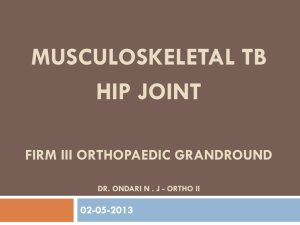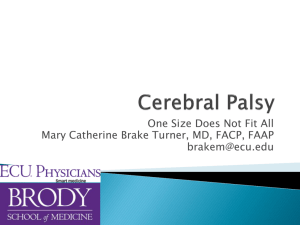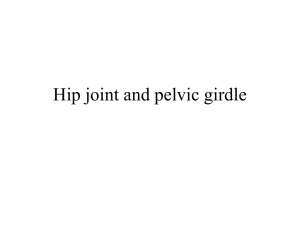EFFECTS OF EXAMINER STRENGTH ON HIP MANUAL MUSCLE
advertisement
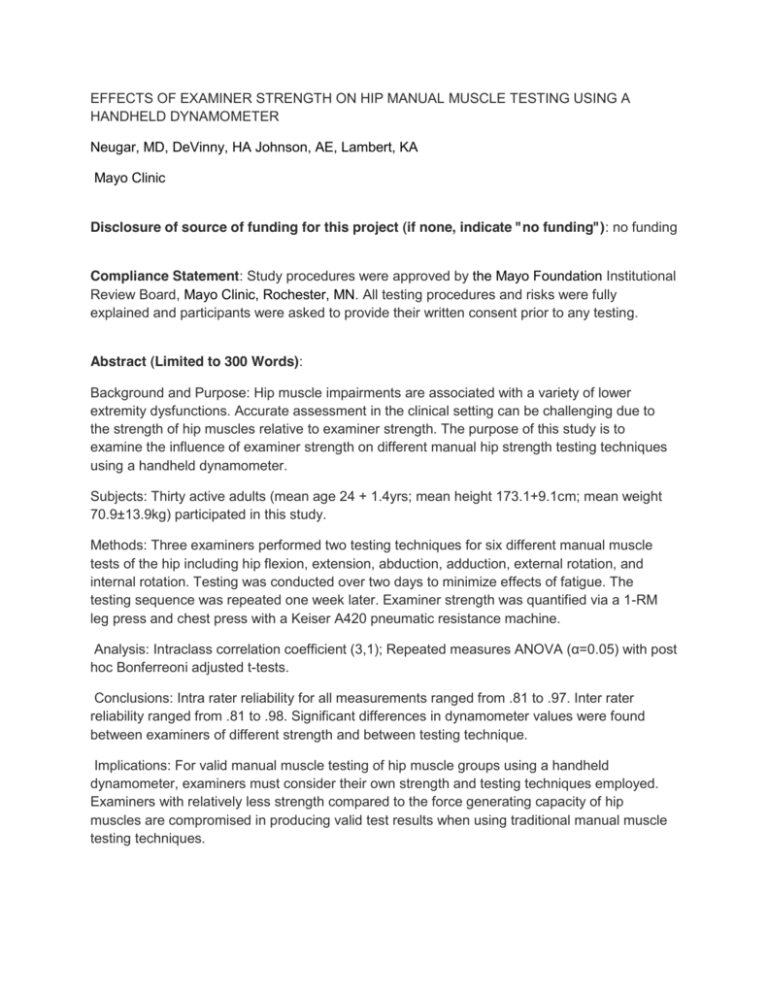
EFFECTS OF EXAMINER STRENGTH ON HIP MANUAL MUSCLE TESTING USING A HANDHELD DYNAMOMETER Neugar, MD, DeVinny, HA Johnson, AE, Lambert, KA Mayo Clinic Disclosure of source of funding for this project (if none, indicate "no funding"): no funding Compliance Statement: Study procedures were approved by the Mayo Foundation Institutional Review Board, Mayo Clinic, Rochester, MN. All testing procedures and risks were fully explained and participants were asked to provide their written consent prior to any testing. Abstract (Limited to 300 Words): Background and Purpose: Hip muscle impairments are associated with a variety of lower extremity dysfunctions. Accurate assessment in the clinical setting can be challenging due to the strength of hip muscles relative to examiner strength. The purpose of this study is to examine the influence of examiner strength on different manual hip strength testing techniques using a handheld dynamometer. Subjects: Thirty active adults (mean age 24 + 1.4yrs; mean height 173.1+9.1cm; mean weight 70.9±13.9kg) participated in this study. Methods: Three examiners performed two testing techniques for six different manual muscle tests of the hip including hip flexion, extension, abduction, adduction, external rotation, and internal rotation. Testing was conducted over two days to minimize effects of fatigue. The testing sequence was repeated one week later. Examiner strength was quantified via a 1-RM leg press and chest press with a Keiser A420 pneumatic resistance machine. Analysis: InWUDFODVVFRUUHODWLRQFRHIILFLHQW5HSHDWHGPHDVXUHV$129$Į ZLWKSRVW hoc Bonferreoni adjusted t-tests. Conclusions: Intra rater reliability for all measurements ranged from .81 to .97. Inter rater reliability ranged from .81 to .98. Significant differences in dynamometer values were found between examiners of different strength and between testing technique. Implications: For valid manual muscle testing of hip muscle groups using a handheld dynamometer, examiners must consider their own strength and testing techniques employed. Examiners with relatively less strength compared to the force generating capacity of hip muscles are compromised in producing valid test results when using traditional manual muscle testing techniques.






